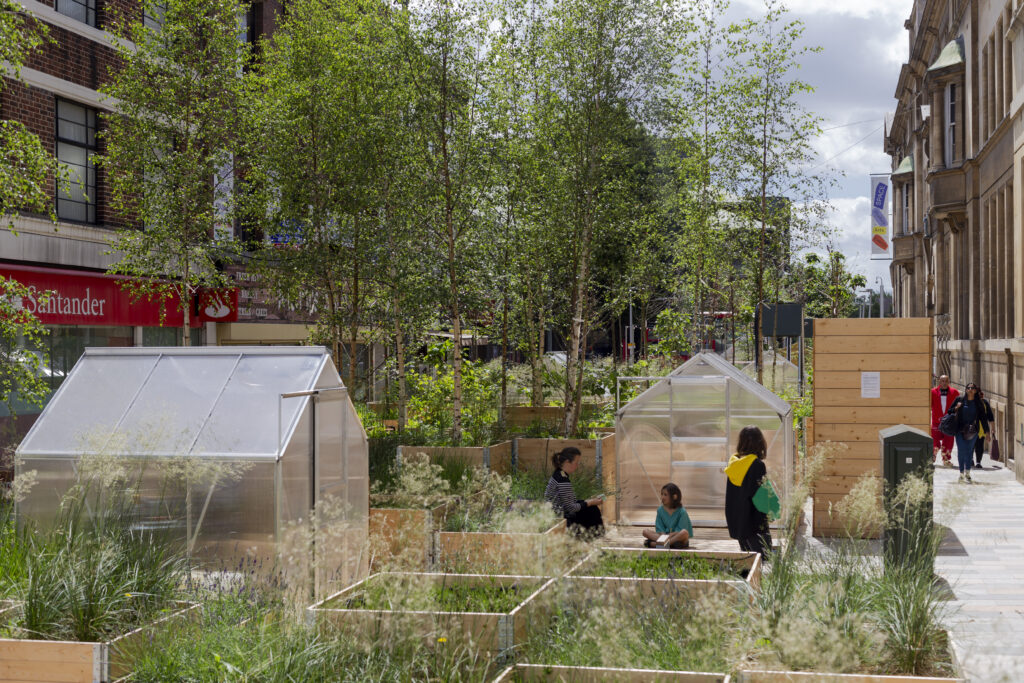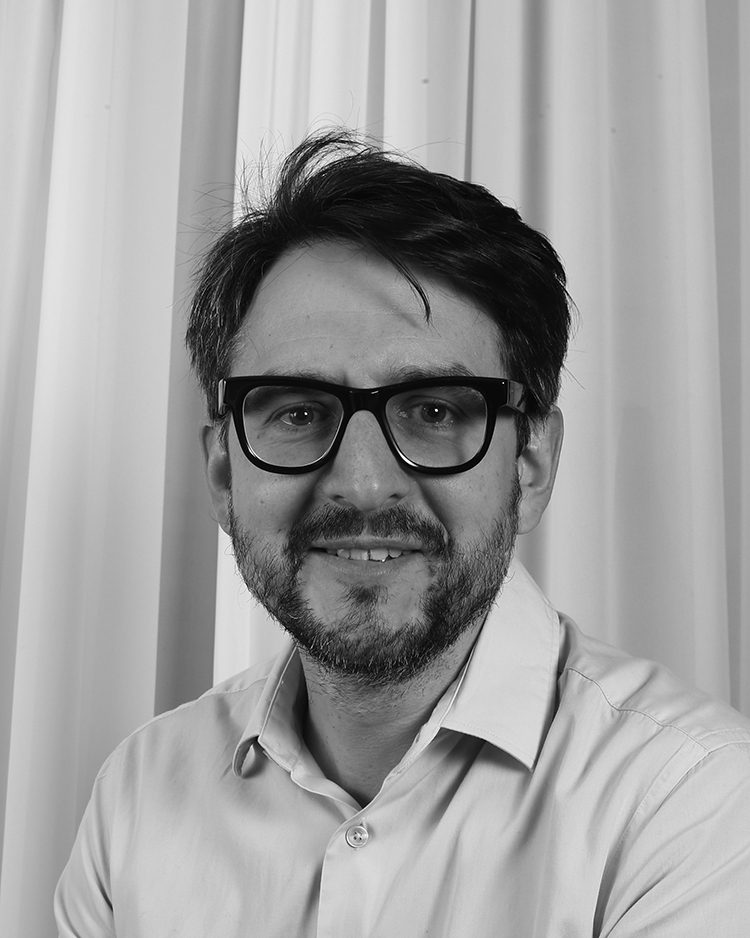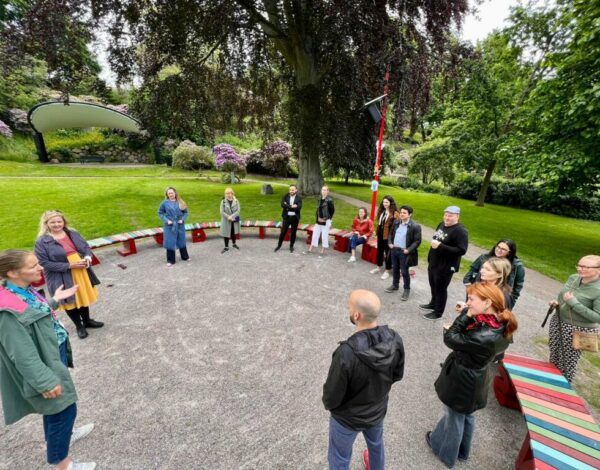Interview with Jan Kattein, founder of London based architecture studio Jan Kattein Architects.
Tell us a little bit about yourself
I live with my family in London where I work as an architect, a lecturer and writer. I was born in Germany and moved to London in 1996 to study architecture. It’s an amazing city in so many ways, a proper multi-cultural melting pot, a fascinating place of science and innovation and creative thinking and invention permeates all sectors, from design to technology, healthcare to the way we live together and organise ourselves as a community. And yet, despite its scale and power, London is in effect a collection of villages which makes it incredibly accessible for the kind of bottom-up change that I promote through my work.
Why did you become an architect?
Growing up, I have always built things. Initially, there were ghost trains, immersive fair-ground experiences and model railway landscapes, rigged up in my bedroom. Eventually and to my parents’ horror, my endeavours expanded beyond our house. There was an electrically propelled go cart that could water the flower boxes and a telephone system that connected all my friends on our street with cabling installed through trenches dug in neighbours’ gardens in the darkness of the night. Later even, when we were teenagers and other teenagers were doing things that teenagers do, I would round up my friends and we would build tree houses, earth cabins and dens in the woods. Studying architecture was actually a natural progression, it combined my interest in making with my interest in engaging others in bigger projects and as a social concern.
When I first qualified, I went into stage design and over the course of several years I designed stage sets and opera sets for venues across Germany. It was in the theatre where I started to become strategic about using design and making as a form of team building. Often my ambitions were bigger than what I could achieve alone, so enthusing others to help and to invest themselves became essential.
At Jan Kattein Architects we have an interest in civic practice. That means that our projects have spatial outcomes and social outcomes. This is for me what architecture is all about.

You are the founder of Jan Kattein Architects. Why did you start it and how did you become focused on civic architecture?
I always thought that architecture had more to offer than amazing design and that the way in which we practice actually constrains us realising all the social and civic benefits that more open forms of practice can bring. When I graduated, my first job was at Peter Barber Architects. They have grown into the most progressive practice working in social housing today. Peter really understands how to create places where communities thrive.
I remember being involved in resident consultation that we undertook as part of an estate regeneration program in East London. That experience was a real awakening and I realised that as architects we are ultimately accountable for our work. I then ended up writing a PhD and reflecting critically on the role of the architect and finding that actually, as architects, we must embrace three roles. My thesis, which was later published as a book titled ‘The Architecture Chronicle, Diary of an architectural practice’ defined the architect – arbitrator, a character that has the ability to engage and invest others; the architect – activist, a character that is prepared to transgress disciplinary boundaries to embrace wider social responsibilities and the architect – inventor, a character prepared to question the status quo to address new challenges. Good architecture is the result of a balanced input from the three. My practice is built around this understanding and the recognition that architecture is a holistic concern that has to do with people, places and the environment.

What is your favourite city and why/what can we learn from it?
There are a few and they all have something to offer that’s special. I love Venice for its ability to function very well without cars. Putting people first is something that we must take much more seriously, for everyone’s sake. And whilst this is an aim that is much harder to achieve in the countryside, in cities, living without cars is entirely achievable. There is a lot to learn from Paris and Barcelona and the leadership that they are showing in reclaiming public space for people.
I love London for how collaboratively we work across the public-, private- and voluntary sector to make things better for communities and how this collaboration has engaged and empowered people to drive change. This is something that other cities can learn from. I think we are genuinely unique in how linked-up we are in London.
I love Athens for the amount of opportunity that it harbours and for the level of industry and entrepreneurialism that keeps the city buzzing. At every street corner there is possibility and potential and it is amazing to see how citizens of this ancient city are starting to embrace this opportunity.
I love Helsinki for its civic infra-structure. I was inspired by Oodi when I visited last summer – what an amazing concept, putting all the tools of all the trades into all the citizen’s hands. Surely every city in the world needs to have an Oodi or two.
Do you see potential in solutions like Parky for developing urban environments?Absolutely. Parkly is a wonderful invention in many ways. Firstly, it’s flexible and can be temporary. I am experiencing a lot of hesitation amongst people when we propose permanent changes to their environment. That is entirely understandable and one way of overcoming this fear is to deploy something that is flexible and impermanent to allow for adjustment, adaptation or relocation. Accepting that change is temporary takes the fear away from it and it becomes much easier to build consensus.
Secondly, we must connect cities to the natural environment again. Communities have become disconnected from nature and there is a generation of children growing up in cities with little empathy or understanding of nature. Parkly creates this opportunity to engage, bringing a little piece of nature right to people’s doorstep.
Thirdly, the pandemic has shown just how important it is that our immediate environment, the streets and squares where we live provide amenity and space for social interaction. In London we have a huge problem around loneliness and social isolation. Parkly addresses this by providing places to meet. Finally, our cities are designed to function efficiently in terms of transport and to support a flourishing economy. Our cities don’t have much space at all for play, adventure and discovery, experiences that are absolutely essential for children and young people to grow into resilient personalities. In its own, small way, Parkly starts to address this deficiency.
What is the most important topic at the moment for a city such as London in terms of developing it towards a greener, healthy and social city?
London is still dominated by motorised traffic. In my borough, in Islington only just over 20% of residents have access to a car. Yet, around 80% of all public space takes the form of streets. We have a lot of work to do to re-address this balance. Traffic exacerbates inequalities. Our mayor has done research that shows that poorer communities are significantly more implicated by air pollution than wealthier communities.
Dream big! What does an ideal future city look and feel like?
The authority that governs streets in London is called ‘Transport for London’. Giving the rights over public spaces to an agency tasked with delivering transport undermines the role that public space has in providing for the well-being of citizens. In my dream city, the transport department would be renamed ‘Department for Public Space’. The Department for Public Space would promote equality, culture and social exchange. It would give young people a voice in shaping public spaces. It would safeguard the right of civil disobedience and protest. It would create space for nature and foster a new symbiotic relationship between people and the planet.
Jan Kattein Architects has received numerous awards for its projects, such as Inspire Future Generations Awards in 2022 as the winner in the category School collaborations.
jankattein.com
Listen to the recent Urbanistica podcast with Jan Kattein and Parkly-founder Päivi Raivio here.


